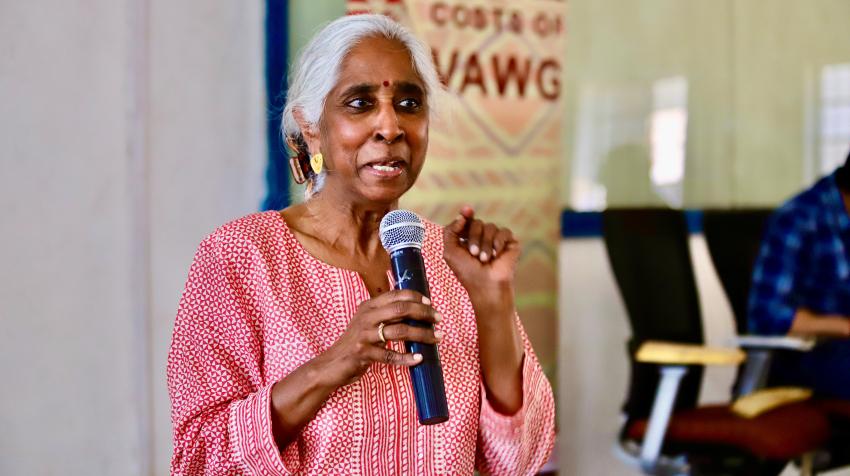According to the report Violence Against Women Prevalence Estimates, 2018, published jointly by different components of the United Nations system, 1 in 3 women experience domestic violence globally. Such violence, also known as ‘domestic abuse’ or ‘intimate partner violence,’ is defined by the United Nations as “a pattern of behavior in any relationship that is used to gain, or maintain, power and control over an intimate partner.”
The Declaration on the Elimination of Violence against Women actually makes a very concrete call to “Promote research, collect data and compile statistics, especially concerning domestic violence.” This is one of the critical research areas for institutions of higher education around the world involved in gender studies and the overall promotion and protection of fundamental freedoms and human rights.
Domestic violence can take various forms, and most often, it combines several types of violence, creating depression, injuries and illness. Moreover, domestic violence results in broader social and economic costs, including those of services to treat and support abused women and bring perpetrators to justice, aside from lost employment and productivity, undermining women’s capabilities, and even slowing down economic growth.
The increasing number of studies on the costs of violence have predominantly been conducted in the so-called Global North. To address this gap in knowledge, a team led by Dr. Nata Duvvury at the Centre for Global Women’s in the National University of Ireland – Galway, a UNAI member institution in Ireland, has built a robust evidence base on the costs of violence against women, particularly domestic violence, in the Global South.
This evidence enables an understanding of how domestic violence undermines households’ economic security and quality of life while limiting the effectiveness of programs to improve the well-being and capabilities of communities across low and middle-income countries. The research program has involved several projects across various countries, conducted in partnership with some multilateral agencies.
As data is often lacking or of poor quality, the research team has used a mix of alternative research methods such as surveys, in-depth interviews, and focus groups. This strategy has been instrumental in enabling the generation of complementary data, which provides a thorough understanding of the costs of domestic violence. The What Works to Prevent Violence project moved beyond by examining the ripple effects of violence through the economy.
This was done by examining the impact on children’s education and women’s care work and analyzing costs to businesses stemming from violence against female employees. Despite the different country contexts involved, similar results have emerged across the costing projects. For example, psychological abuse was the most common form of domestic violence in many of the studied countries.
In addition, missed days of work were reported by working women experiencing violence in all country studies. This missed work of women survivors of violence translated to lost productivity for businesses and the overall economy. As countries strive to expand women's economic participation to accelerate economic growth and eradicate poverty, ensuring the well-being of citizens, this loss might be considered substantial.
In addition to producing individual/household and national level costs, the research also provides macro-economic estimates that enable a deeper understanding of the costs of doing nothing. The main idea, the researchers say, is, of course, the translation of these findings into practical recommendations that inform policy, practice, and resource allocation to prevent domestic violence around the world.
For instance, research showed that in Ghana, domestic violence resulted in a 4.5% reduction of female workers in that country in the year 2019. Another example showed that in Vietnam, the overall costs of accessing services, missed work, and lowered productivity amounted in aggregate to over 3% of the Gross Domestic Product.
The research has already enabled various countries to advocate for investment in prevention and response, including through new legislation and budget increases for primary domestic violence shelters. Overall, the research has positively affected the lives of individual women, while also sensitizing relevant stakeholders, to better understand and measure the impact of domestic violence.
“Globally, our research helps to position violence against women as a key human rights violation of economic and social urgency,” commented Dr. Nata Duvvury. “Costing research is an integral component of the comprehensive response to address this problem. And being part of the measures to eradicate such violence is what motivates us all to continue this work on a daily basis, bridging academia and the community,” she said.




